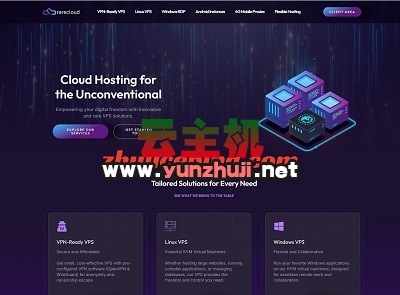Enforcing Policies and Regulations: A Comprehensive Guide
Introduction
Enforcing policies and regulations is a critical task for organizations to ensure compliance, mitigate risks, and maintain operational integrity. This article delves into the various aspects of policy enforcement, including its importance, strategies, challenges, and best practices.
The Importance of Policy Enforcement
Effective policy enforcement ensures that all members of an organization adhere to established rules and guidelines. This not only helps in maintaining order but also fosters a culture of accountability and transparency. Here are some key reasons why policy enforcement is crucial:
1、Compliance with Legal Standards: Organizations must comply with local, national, and international laws. Non-compliance can lead to severe legal consequences, including fines and imprisonment.
2、Risk Management: By enforcing policies, organizations can identify and mitigate potential risks before they escalate into significant issues.
3、Operational Efficiency: Clear policies streamline operations by providing a framework within which employees can operate efficiently and effectively.
4、Reputation Management: Consistent enforcement of policies helps build trust with stakeholders, including customers, investors, and regulators.
Strategies for Effective Policy Enforcement
Implementing effective policy enforcement requires a combination of strategies tailored to the specific needs of the organization. Here are some proven strategies:
1. Clear Communication
Clearly communicate policies to all employees. Use multiple channels such as emails, intranet portals, and training sessions to ensure everyone understands their responsibilities.
2. Training and Education
Conduct regular training sessions to educate employees about the importance of policies and how to adhere to them. Include scenarios and examples to make the training more engaging and practical.
3. Monitoring and Auditing
Establish monitoring mechanisms to track compliance. Conduct regular audits to identify any gaps or non-compliance issues. Use technology to automate monitoring processes where possible.
4. Accountability and Consequences
Define clear consequences for non-compliance. Ensure that these consequences are consistently applied to reinforce the importance of adhering to policies.
5. Continuous Improvement
Regularly review and update policies to reflect changes in laws, regulations, and organizational needs. Solicit feedback from employees to identify areas for improvement.
Challenges in Policy Enforcement
While policy enforcement is essential, it is not without its challenges. Some common obstacles include:
1. Resistance from Employees
Employees may resist new policies, especially if they perceive them as restrictive or unnecessary. Overcoming this resistance requires effective communication and engagement.
Lack of Resources
Enforcing policies can be resource-intensive, requiring time, manpower, and technology. Organizations may struggle to allocate sufficient resources for enforcement activities.
3. Rapid Changes in Regulations
Keeping up with constantly changing laws and regulations can be challenging. Organizations need to stay informed and adapt quickly to avoid compliance issues.
4. Inadequate Training
Insufficient training can lead to misunderstandings about policies, resulting in non-compliance. Investing in comprehensive training programs is crucial.
Best Practices for Policy Enforcement
To overcome these challenges, organizations should adopt best practices for policy enforcement. These include:
1. Leadership Commitment
Ensure that leadership demonstrates a commitment to policy enforcement. Leaders should set the tone from the top and model good behavior.
2. Involvement of Stakeholders
Engage stakeholders in the development and enforcement of policies. This includes employees, management, and external partners. Their input can provide valuable insights and increase buy-in.
Use of Technology
Leverage technology to enhance policy enforcement. Automated systems can help monitor compliance, generate reports, and streamline auditing processes.
4. Transparent Processes
Maintain transparency in the enforcement process. Clearly communicate the criteria for compliance and the steps taken when violations occur. This builds trust and reduces ambiguity.
Conclusion
Enforcing policies and regulations is a complex but essential task for any organization. By understanding the importance of policy enforcement, implementing effective strategies, addressing challenges, and adopting best practices, organizations can ensure compliance, manage risks, and maintain operational integrity.
FAQs
Q1: What should an organization do if an employee repeatedly violates policies?
A1: An organization should first document the violations and provide the employee with clear feedback and guidance on how to comply with the policies. If the behavior continues, progressive disciplinary actions should be taken, which could include warnings, suspension, or termination, depending on the severity and nature of the violations. It’s important to follow a fair and consistent process to ensure that actions are perceived as justified and fair by all parties involved.
Q2: How can technology aid in policy enforcement?
A2: Technology can significantly enhance policy enforcement through automation and monitoring. For instance, software solutions can automatically track compliance with certain procedures, enforce access controls, and generate alerts for potential violations. Additionally, analytics tools can analyze patterns and trends in data to identify areas of concern before they become significant issues. By leveraging technology, organizations can improve efficiency, accuracy, and consistency in their enforcement efforts.
到此,以上就是小编对于“enforce”的问题就介绍到这了,希望介绍的几点解答对大家有用,有任何问题和不懂的,欢迎各位朋友在评论区讨论,给我留言。

 云主机测评网
云主机测评网


















最新评论
本站CDN与莫名CDN同款、亚太CDN、速度还不错,值得推荐。
感谢推荐我们公司产品、有什么活动会第一时间公布!
我在用这类站群服务器、还可以. 用很多年了。